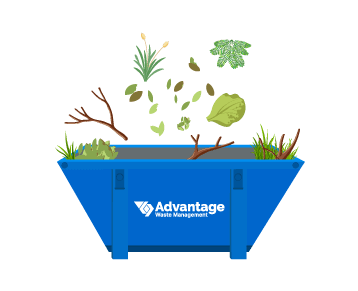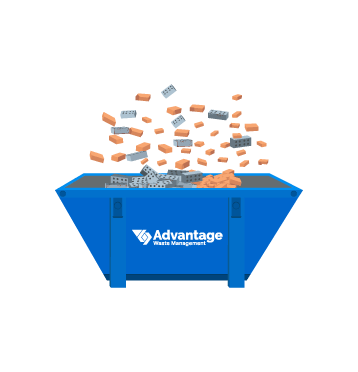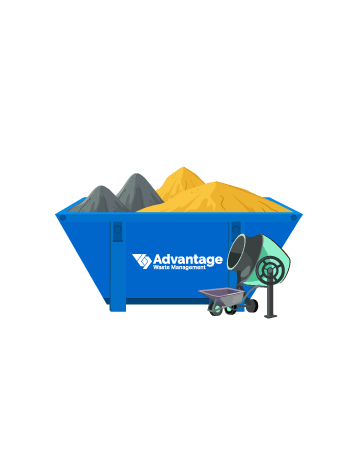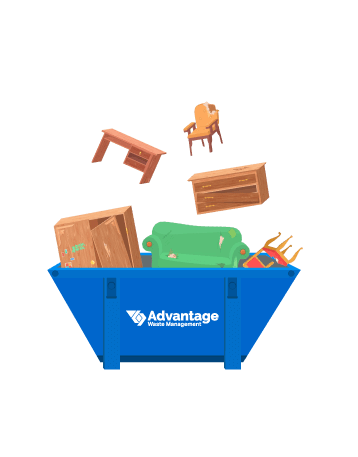Waste management is an important aspect of maintaining a clean and healthy environment. With the increasing population and industrialization, the amount of waste generated is also on the rise.
It is essential to understand the different types of waste and their proper disposal methods to ensure that we are doing our part in preserving the planet.
Types of waste we handle
There are several types of waste, each with its own characteristics and disposal methods. The most common types of waste include:
1. General Waste
General waste refers to rubbish that cannot be recycled by businesses and households. It is often disposed of in landfills. Any material that cannot be recycled and is not dangerous would be considered general waste.
| Items that can be put in a general waste skip bin | Items that should not be put in a general waste skip bin |
|---|---|
| Non-recyclable plastics and packaging | Hazardous materials such as asbestos, chemicals, chemical containers, liquids, batteries, and electronic waste. |
| Food scraps | Heavy building construction waste includes concrete, bricks, tiles, clay, stones, and sand. |
| Non-hazardous cleaning materials | Tree trunks. |
| Household waste includes items such as kitchenware, paper, clothes, bedding, bathroom accessories, cushions, duvets, and towels. | |
| Furniture and appliances like fridges, washing machines, cots, sofas, beds, cupboards and loungers. | |
| Office furniture such as chairs, desks, and desk tidies. | |
| Light green waste like leaves, foliage, twigs, shrubs and grass. | |
| Light building construction waste includes materials such as wallpaper, flooring, and wood. |
It’s also worth noting that some municipalities have their own specific regulations, so it’s best to check with your local council for specific guidelines for your area.
2. Green Waste
Green waste refers to any organic matter that can be decomposed into compost, which can then be used as fertilizer.
Items that can be put in a green waste skip bin:
- Light green waste like leaves, foliage, twigs, small branches, shrubs and grass.
- Tree trunks.
- Wood chips.
- Any waste that is typically from garden cleanups.

3. Concrete/Bricks (Construction and Demolition Waste)
This is basically construction and demolition waste that is generated from building and demolition activities. It can often be recycled or reused in new construction projects.
Items that can be put in a C&D skip bin:
- Concretes.
- Bricks and mortar.
- Rocks and stones.
- Wood chips or untreated timber.
- Roof tiles.
- Floor tiles.

4. Mixed Waste
Mixed waste refers to a combination of general waste, green waste, appliances, timber and some heavy waste materials.
Items that can be put in a mixed waste skip bin:
- Household waste includes items such as kitchenware, paper, clothes, bedding, bathroom accessories, cushions, duvets, and towels.
- Furniture and appliances like fridges, washing machines, cots, sofas, beds, cupboards and loungers.
- Heavy building construction waste includes concrete, bricks, tiles, clay, stones, and sand.
- Treated timber like retaining walls, floorboards, fences, sheds, and decking.
- Green waste like trunks, leaves, foliage, twigs, small branches, shrubs and grass.

5. Soil and Dirt Waste
Soil and dirt waste refers to the excavated soil and dirt that is removed during construction, landscaping, or other earth-moving projects. They can come from both residential and commercial projects and it’s usually removed to make space for buildings, roads or other infrastructure.
Items that can be put in a soil/dirt waste skip bin:
- Clay, sand, silt, sandstone, and dirt rock.
- Traces of vegetation that take up less than 10% of bin space.
Soil/dirt waste needs to be handled properly to avoid environmental damage, as it can contain heavy metals, pesticides and other harmful substances.
Items that should not be put in a soil/dirt waste skip bin:
- Contaminated soils.
- General waste.
- Hazardous materials.

6. Unwanted Furniture
Unwanted furniture refers to any piece of furniture that is no longer needed or desired. It can also include items that are in poor condition and need to be repaired or discarded.
This can include items such as:
- Sofas
- Beds
- Cabinets
- Chairs and seating
- Chests
- Desks
- Tables
- Dressers

Proper Waste Management
Proper waste management is crucial in protecting the environment and human health. Understanding the different types of waste and their proper disposal methods is essential to preserving the planet. By reducing, recycling, and properly disposing of waste, we can all play a role in protecting the environment for future generations.
A Note on Asbestos
It’s important to note that while we accept a wide variety of waste, we cannot accept hazardous waste such as asbestos. For more information on disposing of this type of waste, please visit https://www.asbestossafety.gov.au/.
